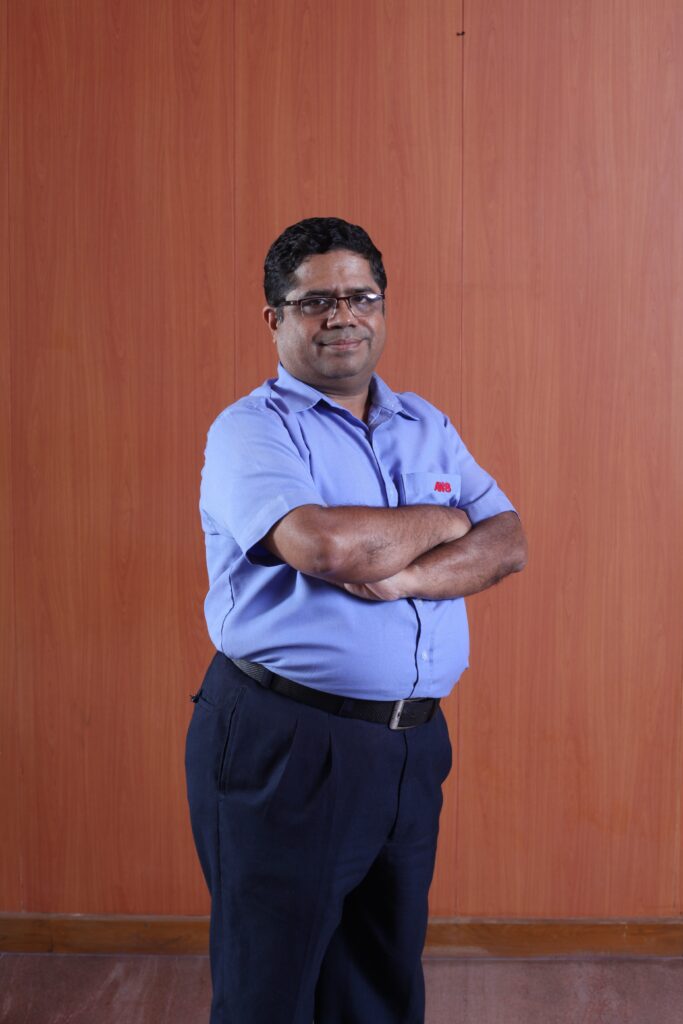Machine Tool sector companies share with us the hard-won lessons of the last one year and how digitalization has helped them combat many of the challenges during this time
At Rs 15,672 crore or USD 2.14 billion worth of consumption in FY 2019-20, India ranks among the biggest machine tools (MT) consumers in the world.
The last fourteen months have been devastating for global health and the economy. India’s manufacturing industry, already reeling from a trade war, and market uncertainties, was hit hard when it was down. Industrial activity suffered for most of the year, and it is the demand for essential items and hope for a sharp recovery that has kept the industry going. India’s March 2021 industrial output as per an IIP of 22.4 percent (year-on-year) indicated a positive change, but it is too early to make any predictions.
Digitalization was the biggest antidote that the companies used to face these challenges – used not only for employee interaction but also on the shopfloor for product innovation and optimization of manufacturing processes.
To get a sense of the use of digitalization and the increase in its adoption during the pandemic, we reached out to the MT sector’s five prominent companies, and they didn’t disappoint us. Harish B, CEO, Micromatic Machine Tools (MMT) Pvt. Ltd; Ganesh S, AVP production & ISG, Ace Manufacturing Systems Ltd (AMS); L Krishnan, Managing Director, TaeguTec India; Rajesh Nath, Managing Director, German Engineering Federation (VDMA) India Office; and Mr. Vivek Tomar, Vice President – Technical Management, CERATIZIT India Pvt. Ltd and Rizwan Khan, Sales Manager – India, SupplyPoint shared with us a wealth of information, insights, and hard-won lessons from their experience of facing the challenges posed by the pandemic, and the role of digitalization. Edited excerpts:
Q: What are the top challenges that your company faced in the past year?
Harish B, CEO, Micromatic Machine Tools Pvt. Ltd (HB): Like others, the leadership team of Micromatic was also completely shaken up, worried, and devastated by the sudden turn of events post-COVID. Being a traditional brick and mortar company with over 80 percent of the 600-plus employees being hardcore mechanical and electrical engineers, we were extremely concerned about how to keep them motivated and productively engaged during the lockdown period.
To add, we also had the challenge of ensuring employee engagement of over 200 staff members employed by our franchisees, dealers, and service associates. Having been a machine tool company for well over three decades, most of us had never seriously explored video conferencing tools like Skype or Zoom, etc. Virtual meetings were simply alien to us. However, tough times required us to make major decisions to enable survival and transformation. Considering the security issues with the Zoom app, we decided to use Microsoft Teams as a platform to connect seamlessly with all our employees.

The biggest concern during this pandemic for businesses is how to keep employees from feeling the financial pinch. Despite the lockdowns affecting the sector companies’ business, I am proud to report that at Micromatic, the management neither discussed with employees nor implemented any extreme measures like retrenchment, salary cuts, leave reductions, etc. Even more, the senior management went ahead and decided to help the franchisees and service associates with special assistance packages to help them overcome the temporary cash flow challenges they faced during this crisis. The senior management team also conducted ten “Town Hall” meetings across India over video conferencing to connect with every employee across all the 60-plus MMT (Micromatic Machine Tools)locations across India. These meetings were used to communicate information on the Covid-19 crisis, the management’s responses, actions, and decisions. Most importantly, these meetings were also used by senior management to convey concern, commitment, and empathy.
Further, employees were also taken into confidence about the financial health of the company, [financial] reserves, etc. Each employee was encouraged to enhance the collection of outstanding payments and reduce credit for the sustenance of the organization. Overall, we have braved a storm that nobody in the world saw coming. This is not to say that things are going to be smooth from here, or that the storm is over, but this experience has reaffirmed our belief in our ability to face the toughest of times.
Ganesh S, AVP production & ISG, Ace Manufacturing Systems Ltd (GS). Indian machine tool industry has faced many tough challenges in the last year. Market uncertainties caused by changing customer preferences and demands, new market trends, and the global pandemic have together brought in many changes in the way we work. Despite having orders in hand, executing them was a major challenge [due to lockdown restrictions]. The pandemic affected the whole world, and our supply chain was no exception. With most of the countries closing ports, getting imported parts on time was a big challenge.

The sudden lockdown restrictions resulted in many of us having to work from home. Facilitating that to happen was a challenge by itself. After the lockdown lifted, getting skilled contract workers was next to impossible. The pandemic restrictions on having to work with minimum staff and maintaining social distancing have led to new ways of working in a manufacturing setup like ours.
L Krishnan, Managing Director, TaeguTec India (LK): In the last year, our business decisions have largely been directed by pandemic-driven outcomes. The biggest challenge was to continually adjust one’s plan of action to changing requirements as the market fluctuated from, say, 0 to 100 to 70. Essentially, the challenge can be defined as one of unpredictability and changing demand levels, and when that happens, the key is to know when to decelerate and when to step on the gas.

Rajesh Nath, Managing Director, German Engineering Federation (VDMA) India Office (RN): The pandemic hit manufacturers in an unexpected and unprecedented way. For the first time in modern manufacturing history, demand, supply, and workforce were affected globally at the same time. The virus has highlighted various critical gaps in the manufacturing sector. Companies need to build their business continuity plans afresh, review the existing manufacturing supply-chain models and explore automation possibilities to reduce the impact of this crisis on production lines in the future.

There are increasing signs in the mechanical and plant engineering sector that the last year’s severe setback can be at least partially made up for in the current year. Admittedly, the pandemic with its impact on global trade is still weighing noticeably on companies and their investment plans. Other disruptive factors such as recurring supply bottlenecks for certain products, the structural change in important customer industries forced by the crisis, are also making themselves felt. Further, now with the second wave, there is an issue concerning demand whereas last year when the pandemic struck, the major issue supplied.
Vivek Tomar, Vice President – Technical Management, CERATIZIT India Pvt. Ltd (VT): Due to the pandemic, thousands of suppliers, manufacturers, and customers have suffered material losses. Productions and shipments slowed down and even stopped in some cases. Cutting tools enterprises in the automotive, aerospace, and medical industries are affected by the slowdown in the Indian economy and the global recession. Indian cutting tools market has reacted in line with the global market with weak consumption and spending. Consumer sentiments are affected, but we are sure we will overcome the situation with flying colors.

Rizwan Khan Sales Manager – India, SupplyPoint (RK): With our mission to help our customers manage and control the stock and inventory in their organizations, we are the supplier of choice for our customers across the globe. At SupplyPoint we are serving different industry verticals in aerospace, automotive, manufacturing, healthcare, warehousing, and a few more. The major challenge was to reach our customers in large geographies due to travel restrictions, customer visitor policies, Covid-19 guidelines, and many other barriers that were new to us. However, it was the right time to utilize technology and different platforms to connect with our customers and make sure the needs were addressed at the right time.

All that was made possible through digitalization. Through proactive measures to overcome the hurdles, we could measure and sustain our business in the pandemic last year with proportionate volumes from these industry verticals. To add, the situation pushed us to explore new opportunities and further extend our reach and develop more business partners in the country.
Q. Have you adopted or increased the usage of digitalization to combat these challenges? Could you give us some examples from product innovation and manufacturing processes to illustrate how you’ve used digitalization to combat these challenges and aim for growth?
HB: Because of the pandemic, we made a transition into virtual means of connecting with colleagues and employees through Microsoft Teams. Recently, we have adopted SAP modules for Finance & Accounts at Micromatic Machine Tools. This will enable us to connect seamlessly to the SAP systems available at the manufacturing plants of all three Principals for complete integration of all customer-facing data and information.
We have also started a digital transformation journey for customers, channel partners, and sales and service operations. In this journey, we will be adopting applications and solutions for Field Force Management, Travel Management, Expense Management, Online payments, AMC funding, and customer portals for e-Commerce & Market place.
Digitalization is happening not only on our CNC machines but also at all our manufacturing facilities and assembly lines. Further, there is digitalization across all 60-plus MMT locations across India. All critical machines, assembly lines, and information systems at the new manufacturing plant of Ace Designers in Bengaluru, is in the final stages of getting connected and Industry 4.0-enabled. All our manufacturing facilities at Ace Designers, Ace Manufacturing Systems, and Micromatic Grinding Technologies have adopted SAP systems for more than a decade for the management of business processes, effective data processing, and information flow.
The digitalization of assets and assembly lines at the new 80-acre manufacturing facility of Ace Designers will enable us to know the exact status of every machine in the assembly line. This will enable us to predict with great accuracy, the exact date when a specific customer’s machine will be ready for dispatch. SAP introduction which happened more than a decade ago has enabled us to streamline and optimize our supply chain efficiently. This has helped us to cut costs and take advantage of economies of scale. Thanks to the digitalization and automation of processes and assembly lines, we have been able to scale up the dispatches from 2000-plus to 5000-plus numbers per annum without any additional technical manpower.
We have dozens of very expensive mother machines from Europe and Japan to manufacture large parts to very stringent accuracies required for building good CNC lathes and machining centers. These capital-intensive mother machines cost several crores of rupees. The introduction of Industry 4.0 and IoT technologies has enabled us to increase the OEE (Overall Equipment Effectiveness) of these expensive mother machines from 45 percent to 75 percent. Thanks to digitalization, we are now able to run some of our mother machines without any operator in the third shift in the “Lights Out” condition. Similarly, we have seen the OEE of all our manufacturing plants increase substantially after we introduced “TPM-Trak” monitoring solutions on the bottleneck machines.
GS: Digitalization has become an inevitable tool for any organization to survive, compete and become a leader in their industry in today’s challenging technologically emerging market. Yes, we did adopt and increase our digitalization usage, we turned from physical or manual mode to virtual mode wherever possible.
For work-from-home for all departments, starting with getting orders from the market by the marketing department, product design team designing the product, planning department coming up with the production plan, supply chain with procuring the parts, we have gone virtual. To operate through vendor portal and SAP system to get the parts, will happen from wherever they are. Presently only the assembly of machines requires people on the shop floor. The progress of the machine, machine history, and quality data is captured through digital technology.
Using customized SAP, our machine-building activities are done digitally, starting from customer order up to machine dispatch. Real-time machine building process data, real-time parts availability at vendor place and in the factory, and machine history data are all readily available digitally in the SAP dashboard.
Our product design department uses the latest software like Solidworks, FEA analysis tool, and EPLAN to design the product according to customer need, in the shortest time with the highest accuracy. Using CAM software to simulate and machine the customer components helps in reducing prove-out time on the machine.
Automated quality testing of machines, like spindle running, capturing machine history digitally are done in the digitalization process. Remote machine monitoring software tool helps in diagnosing machine problems without going near the machine, thereby restricting the travel time of our engineers to customer’s workplace but also reducing the downtime of the machine.
LK: Digitalization is not supposed to be, and cannot be, a knee-jerk reaction to these times. Particularly for us at TaeguTec India, as part of a large MNC, digitalization has been an ongoing process over the last decade. We are well integrated with the global network for production, R&D, and sales. Cloud adoption has also been significantly high, and the transfer process is thus work-in-progress. We rate ourselves quite high when it comes to the level of maturity in the digitalization journey.
RN: While in the pre-crisis era, automation was viewed as a means to innovate, reduce cost, and gain a competitive edge, now the purpose has shifted to survival and damage limitation. To mitigate global supply chain risks for future crises, manufacturers will consider bolstering their in-house capabilities instead of out-sourcing manufacturing to other countries.
The pandemic will intensify the need to automate. In fact, the focal point in this drive to automate would be especially in jobs that have the 5D factor – Dull and repetitive, Difficult and complex, Dangerous and hazardous, Dirty and polluting, and the new dimension of Distancing and safety. Although the degree of adoption may vary depending on the industry and the readiness of the companies to make huge investments at this time, the Covid crisis has certainly acted as a catalyst in the transition to automation, especially in building resilience among businesses for future disruptions.
The need of the hour is to take “baby steps” in automation which can generate a faster Return on Investment (RoI) and can be implemented without high capital expenditure. Artificial Intelligence (AI), Machine Learning (ML) and Robotics would drive businesses to help manufacturers to produce quality products at a better cost and through that to give them the competitive edge to progress and prosper in these challenging times. The important role of automation in manufacturing is here to stay and the journey to enhance automation and robotics in the recovery phase is just beginning.
VT: CERATIZIT Group in India has three manufacturing plants. We have merged our IT infrastructure and ERP to get the benefits of minimizing inventory and multitasking. This has minimized the time for us to track multiple events and enabled paperless working including approvals. We implemented Industry 4.0 solutions to improve quality and to increase productivity.
CERATIZIT ‘s “ToolScope” is a monitoring and control system, which continuously records signals from the machine that are generated during the production process. This data is visualized and used to monitor and adjust the machine. It offers a wide range of apps like process monitoring, tool wear monitoring, adaptive feed control, collision detection, machine condition monitoring, tool change log, machine data analysis, and quality documentation. Users of this system have experienced a reduction in cycle times of up to 15 percent, an Increase in process security of up to 25 percent, an Increase in tool life of up to 30 percent, stopped machine damages, and proved very helpful in preventive machine maintenance.
RK: There are two things – Business and Process – that we can talk about in digitalization. It is about making our business more interactive and reachable for our customers. At SupplyPoint we have two manufacturing units one in North Carolina, the U.S., and one in Rugby, the UK; we have our team well prepared to support our customers from remote locations, right from installation, training the users and admins, training our partners, with advanced demo-training rooms upgrade and support existing customers. Our partners and associates are also well equipped and trained at expert levels to support our customers.
Our team is consistently setting the standard for intelligent inventory solutions by helping our customers to organize, sustain, standardize, upgrade and transform from the existing inventory management practices to the new Industry 4.0 technology.
With our innovative products and cloud-based software WebSync-enabled features, our customers can control and manage stock for different locations with a single login. Our solutions are helping our customers go paperless for important processes, save time and cost, and fetch ROI within a year. All of this results in 25-40 percent of savings in our customers’ annual costs spent in Inventory and control.
Digitalization has kept our customers moving with minimal onsite contact with personnel and by automating the complete procurement process from automatic ordering to consumption.
Q: What are the typical hurdles that organizations face with digitalization programs (issues like data security, lack of digital know-how, or financial/time constraints) and how can organizations address these challenges?
HB: In the machine tools industry, most are predominantly brick-and-mortar establishments, and therefore adapting to digital technologies is by itself a challenging task. Having to bridge the large gap seems quite daunting to most machine tool companies. While the time constraint is not an issue, the effort to take the first step in adopting digital solutions is extremely crucial.
Another major issue with organizations is the commitment and drive of top management for the implementation of digitalization solutions and real-time data capture for long-term sustenance. A top-down approach is generally possible when there is absolute trust and understanding between the senior management and the workforce.
Further, senior management is generally impatient to see quick results and it is therefore important that they support the initiative strongly for a couple of years to see a good return on investment. Digitalization also requires substantial investment in hardware, servers, cyber security, connectivity, etc. which are not envisaged in the initial stages. The misconceptions surrounding digitalization must also be first removed for the problems to be mitigated and to ensure long-term success.
GS: All digitalization technology implementations are planned by considering the cybersecurity risk of the present and the future.
Critical information assets are identified, and mapping is done on how that information flows in the organization. Thereafter, a protection level is introduced depending on the risk.
Also, in cybersecurity, privacy in the following areas is of utmost importance: Contingency and disaster recovery planning; Operational Security; Personal security; and Physical security.
Suitable software tools are installed to take care of the security both internally within the organization and of the data available in the cloud.
Investments in digitalization are being done considering the ROI in the following areas as Increased operational efficiency of machine-building; Reduced downtime; Improved ability to predict and adjust to facility and supply changes.
The biggest challenge we face during the implementation phase is a lack of relevant knowledge in advanced areas like cloud computing, advanced data analytics, digital twins, sensors and IOT, wireless and infrastructure, AI, and machine learning.
We have in-house expertise in many areas like sensors and IOT, Internet and infrastructure, digital twins, etc. We have also taken help from external agencies and our group company AMIT, in other areas.
Some of the other challenges we faced during the digitalization program are, coming up with a clear roadmap to transform the present rigid infrastructure into a flexible one. Drawing up the best-fit budgetary and ROI considerations, arriving upon the right business model to realize value from digitalization, and the market acceptance of a new technology considering the additional cost. Another challenge during the digitalization process is the engagement of people from across levels, starting from top management to all cross-functional teams from different departments.
LK: The need for digitalization of an organization should arise out of identifying the main bottlenecks and the desired level of improvement. Each organization’s priorities are unique, and as long as any organization can dovetail those priorities with the stages of digitalization, the success rates are certain to be higher. It is always good to make digitalization a journey rather than a sudden switch – in order to avoid disruptions to cost, effort and thereby compromise the implementation success. It is therefore recommended for organizations to lay out a digitalization roadmap after diligently identifying the bottlenecks; so that the pain of transition is minimal.
RN: Industry 4.0 is characterized by digitalization and interconnection of products, value chains, and business models. It is driven by an amalgamation of technologies such as the Internet of Things (IoT), artificial intelligence, data volumes, business analytics, computational power, augmented reality, elemental design, advanced robotics, simulation, additive manufacturing, cyber-physical systems, and sensor-based technologies. It results in ‘Smart Factory’, which is characterized by resource efficiency in the factory processes along with higher reliability and a conspicuous improvement in the quality of the output as well.
Presuming that complete automation is not the realistic view, it can be said that Industry 4.0 will increase productivity through a mix of physical and digital assistance systems. This will happen as the technological advancements brought by Industry 4.0 will mean that physically demanding or routine jobs will decrease, while the demand of jobs that require problem-solving, flexible responses, and customization will go up. The employees might have to combine the skills of know-how related to a job with IT competencies.
Some key challenges in manufacturing after the realization of Industry 4.0 potential include fostering a strong digital culture and ensuring data security. Some major hurdles to look out for are a lack of data analytical capabilities, the prevalence of proprietary standards that makes standardization difficult. And the major risks that need to be mitigated are the security and privacy issues that come with recording, storage, and analysis of large volumes of customer data.
VT: The digitalization and Industry 4.0 movements were gaining steam even prior to the pandemic, but lockdowns and budget cuts forced many businesses to freeze their digital transformation efforts. Now, with manufacturing resuming in many areas, it’s time for businesses to rethink how digitalization and sustainability can support them in the current and future crises. Taking small steps can help create a foundation for a digital transformation that could provide an invaluable competitive edge. Steps such as Digital work instructions and process details for operators; Digital performance management with IoT; Operator assistance through augmented reality; Digital monitoring and maintenance technologies; Creating digital twins. Companies that already have some existing support infrastructure, such as data sharing capabilities to support Big Data analytics, have even more options: Artificial intelligence-based decision support; Process automation for digital services; Operator training using virtual reality; Warehouse logistics automation.
Digitalization is essentially a big continuous improvement project so you can apply a lot of the principles you know from Lean and world-class manufacturing operations and processes.
RK: Digitalization is a change management process that needs to be adopted by the workforce of any organization. Managers and staff have to come out of the comfort zone of age-old practices such as excel sheets to run the operations and manage the factory. This is the right time when companies should begin their transformation to a smart factory. SupplyPoint has over 20 years of experience in inventory management and transforming businesses through automation.
There are many customers who are concerned with data security. It is important to share the knowledge with our customers that they have a choice to secure the data: it could be on the cloud-based WebSync platform or a local database LANsync server that secures the data within the customer’s server.
Q4: What impact this leap in digitalization of the past year has had on customer preferences? For example, do you see an increased demand for digital features, product customization, specialized after-sales support, or improved supply-chain metrics like a faster time-to-market?
HB: Some of the demands from customers for setting up online payments, e-commerce portals, and the marketplace are now being explored and will be implemented soon. Extended usage of CRM over the last 17 years has given us a wealth of customer and market-related data which is enabling us to understand customer needs, segmentation, and geography. All our business decisions today are based on analytics of CRM data.
Thanks to Dynamics CRM, we can seamlessly connect to all our branches, satellite offices, franchisees, and channel partners at 60-plus locations across India and abroad. Adoption of applications and solutions for Field Force Management, Travel & Expense Management, etc., will enable us to efficiently manage our field team and operations by looking into critical features, job assignments, service tickets, generation and submission of quotes, real-time tracking, error-free data entry, and many more.
In most cases, we have seen that the ROI for any Industry 4.0 implementation is less than one year for a well-executed project, provided all resources are made available by the management. Ace Micromatic Group is at the forefront of all Indian MTBs (Machine Tool Builders) in embracing and propagating the usage of IIoT technology to customers. We started the initiative to harness data from our machines, way back in 2003 when words like IoT and Industry 4.0 were not conceived. Our flagship product to capture the OEE of CNC machines was launched in 2005, thanks to the vision of our founding fathers. This initiative is further strengthened with the launch of new products and solutions, EDGE devices, and IoT platforms for seamless shop floor integration.
GS: For past one year the digitalization process in the company has given tremendous results in:
- The design of a product through latest tools like Solidworks, FEA analysis tools to simulate and validate the product in design stage itself, make error free design, faster development time, modular concept of design so that new product development becomes easy and faster to meet customer needs.
- Using customised SAP tool, whole manufacturing process is digitised to know real time status of machine production, status of parts from supply chain
- Seeing that the machines are IOT enabled and all information of machines like machine productivity at end user, machine health monitoring, machine preventive and predictive maintenance details are available digitally.
- The customer support for on field machines through remote diagnosis tool to solve machine problems from anywhere helps to solve problem quickly. Through IOT software, machine information is available on cloud; depending on the kind of data and accessibility rule, data can be seen anywhere by the respective team and end users.
Many more such solutions are being developed by our team along with our group company AMIT to cater to the customer needs and ease of use for customers. So yes, we see an increased demand in the preferences of customers for digital features and product customization.
LK: The customer expectations continue to be on the fronts of value proposition, cost, quality, and delivery of solution being offered to them. We’ve not really experienced any specific trend arising out of digitalization in the customer demand.
RN: As the demand for high-tech and efficient machines in the industry rises, digitalization of the production process becomes the key to higher productivity, flexibility, and efficiency, as well as simple operability and the possibility of permanent optimization. While traditional manufacturers use various tools for milling, turning, grinding, and other applications, digitalization is radically and sustainably changing the production environment and becoming an indispensable part of the business. Very soon, it will be the new normal.
India’s machine tools industry is expected to play a key role in accelerating this manufacturing growth as they are a strategic pillar of the manufacturing industry. The machine tools industry is pivotal to the augmentation of various discrete manufacturing segments such as automobiles, defense, railways, plastic machinery, electronics, white goods, etc. It plays a huge role in the Government’s flagship program Make in India.
VT: Manufacturing is quickly transitioning from mass production to highly customized products to meet individual needs and speed up time-to-market. 3D printing and additive manufacturing practices can transform how companies develop products for individuals rather than markets. Automation is being extended beyond the factory floor to every part of an enterprise. For instance, reducing data silos and sharing data between business segments can help transition decision support from humans to artificial intelligence and machine learning algorithms that may provide more accurate insights.
RK: Digitalization has impacted our customers to have a paperless, contactless, and remote working culture. Further, many customers prefer the flexibility to have customization and connectivity to SAP/ERP modules. Our integrated software and hardware have been proved a right choice to many of our customers. We see the growth and requirements to increase awareness of Intelligent Inventory solutions. With long extended travel restrictions, we have our teams lined up for digital training, after-sales support with remote access on SupplyPoint machines, access points, and independent routers by keeping our connections live with vending machines and having better preventive measures to support our customers.
Q5: India’s Metal Cutting Machine Tools (MCMT) companies face several challenges such as dependence on the cyclical growth of industries such as auto and construction, intense competition, complex distribution networks, etc. Can you share with us your growth strategy, which is helping you address the above challenges, as well as take advantage of the emerging opportunities?
HB: We grew at a CAGR of 15 percent for the period from FY 12-13 to FY 18-19 until the pandemic hit us. We have traditionally adopted the following growth strategies to maintain and hopefully accelerate this growth rate for long term sustenance and profitability:
- Stronger marketing and distribution strategy
Traditionally, all the Ace Micromatic group machines and services were sold by MMT through a network of large branches and satellite offices. We recognized that we had to reduce our dependence on manpower and increase the contribution per employee for sustenance and profitability. We also recognized that the spirit of entrepreneurship is a very powerful force that can greatly enhance revenue contributions.
Considering the above, we gradually reduced our dependence on a self-operated network of branches and satellite offices. We achieved this by increasing the number of franchisees and dealers which also enabled greater penetration into the market. Today, we have a presence in 60+ locations across India with twenty branches, ten franchisees, fifteen service franchisees, ten dealers, plus several satellite offices and resident engineers.
- Better pricing strategy and bundling VAS at competitive costs
Micromatic has always believed in assisting customers beyond the traditional and narrow outlook of just the machine supply. We were aware that several products and consumables are required to enable the CNC machines to cut metal efficiently. We, therefore, partnered with best-in-class manufacturers to address the diverse needs of the shop floor, thereby ensuring that our customers achieved machining with the lowest cost per component. Be it power stabilizers, lubricants, grease, tool holders, inserts, or an online solution to help customers get more orders, our Ecosystem partners help in productionizing faster and better.
- Increased focus on customer support and awareness
Micromatic is the face of customer service for Ace Micromatic, India’s largest machine tool group. We have helped customers set new paradigms in productivity through innovations and interactions. We have developed a one-stop super shop for total customer support, by interfacing the technological excellence of the manufacturing units with the customer’s desire for higher productivity and profits.
We provide Application Engineering, Commissioning and Training, Tech centers, Continuous Monitoring of product performance & Annual Maintenance Contracts. Customers are served through the extensive and widely spread Sales and Service network across 60+ locations, eight technology centers, and a strong team of 500+ trained engineers spread across the country.
We provide customers with affordable CNC technology and close handholding which is why over 60 percent of our customers place repeat orders every year.
- Increased focus on innovation and integration of newer technologies
Focus on core competencies, deep-rooted ethics, innovation, strong systems, mature processes, world-class infrastructure, unmatched customer support, and empowered employees have been the focussed strategies for our growth in the past. We are now concentrating on deeper market penetration, low-cost automation, cost-effective working, and the passion of our employees to drive our future growth. We are also focussing on Industry 4.0, Field automation, metal forming, and 3D printing technologies for further accelerating the growth of our organization.
GS: True, we Indian MCMT companies faced a number of challenges. We feel these challenges have made us emerge much stronger to face the world and the tough competition from global players. Over the years and over many cyclic ups and downs, we have learned to harvest in different markets and different sectors. The recent ‘Atmanirbhar’ initiative by the Indian Government and the PLI scheme may facilitate our growth. As the world is looking at India as the manufacturing hub, we are looking at umpteen number of opportunities that are up for grabs. We have been developing products and solutions indigenously to cater to the needs of our customers and now, we are also coming out with new products to cater to the emerging sectors like the electronics components manufacturing sector, defense and die and mold sectors.
AMS strongly believes in being customer-centric and service-oriented, with the help of our group company, MMT, we have been able to reach out to our customers when they are in need. We are constantly looking at learning, adapting, and catering to the market trends and demands. We believe change is the order of the day and whoever is ready to change and adapt to the ever-changing market, will survive.
LK: We as an organization are fairly abreast of the challenges in the VUCA world. We do acknowledge that in the times to come, we’ll be increasingly witnessing high levels of volatility. But one must be proactive enough to anticipate that these pockets of uncertainties are windows of opportunities for growth. We feel that at TaeguTec we are geared to face these uncertainties and leverage the growth opportunities. Towards this nimble-footed effort and culture to respond quickly to market changes, digitalization is certainly a significant enabler.
RN: The industry is moving towards increasingly advanced CNC machines, driven by demand from critical user segments, such as electronics, medical equipment, die and mold, automobiles, consumer durables, etc. Hence, modern manufacturers of machine tools should leverage the capabilities to cater to this demand and investments to yield long-term benefits.
The machine tool industry is gaining prominence and has started adopting innovative solutions. The technology push in the machine tools industry is driven by user industries’ demand for automation and an increase in productivity. Hence, there is a significant demand for more flexible machine tool designs that can quickly adapt to new products, as well as for sophisticated CNC controllers that can operate and deliver precision.
As shops look to expand capacity, one option would be turning to lights-out machining instead of adding machines, employees, or shifts. In order to successfully transition a production process from attended to unattended machining, shops should reconsider every aspect of the process and optimize it for lights-out production. The new process may require new equipment, such as the addition of automation for loading and unloading the machine in the form of bar feeders, machine-tending robots, or pallet systems. Machine monitoring software can provide data and insights into the process that can drive optimization. However, unattended machining carries certain risks and requires the necessary setup.
The pandemic has also highlighted the benefits of remote monitoring and condition monitoring. This can help in preventing the breakdown of machines and the manufacturer can remotely monitor the machines without the need to send a service engineer. Also through virtual reality, necessary training on the machine can be accorded to the customer and issues can be handled remotely.
VT: As your business grows, your strategy needs to evolve to suit your changed circumstances. Your focus is likely to change from winning new customers to building profitable relationships and maximizing growth with existing customers.
As products and services age, sales growth and profit margins get squeezed. Understanding where your products are in their lifecycles can help you work out how to maximize overall profitability. At the same time, you need to invest in innovation to build a stream of new, profitable products to market.
At the same time, every business needs to be alert to new opportunities. There are obvious risks to relying solely on existing customers. Diversifying your customer base spreads those risks. Effective leadership will help you make the most of the opportunities, creating sustainable growth for the future.
RK: Our solutions have been distributed in more than 30+ countries with over 55,000 installations, taking forward the power of our global business community and inspired commitment; our innovative solutions are backed by a strong network of partners and associates across the globe. We have a local and global presence by making our solutions reachable, with consistency in customer support by creating customer value in supply, installation, and support in the long run. Knowledge sharing is playing a vital role in the Indian market where not all customers are using Intelligent Inventory solutions to manage the stocks and inventory in the factory. Our team shall keep focusing to train and develop our associates to reach our customers.
This Article was featured in Dynamic Manufacturing India May_June 2021 issue as Cover Story written by Aanand Pandey. Editor in Chief
E copy of DMI – https://www.machineinsider.com/dmi-may-june-2021/


